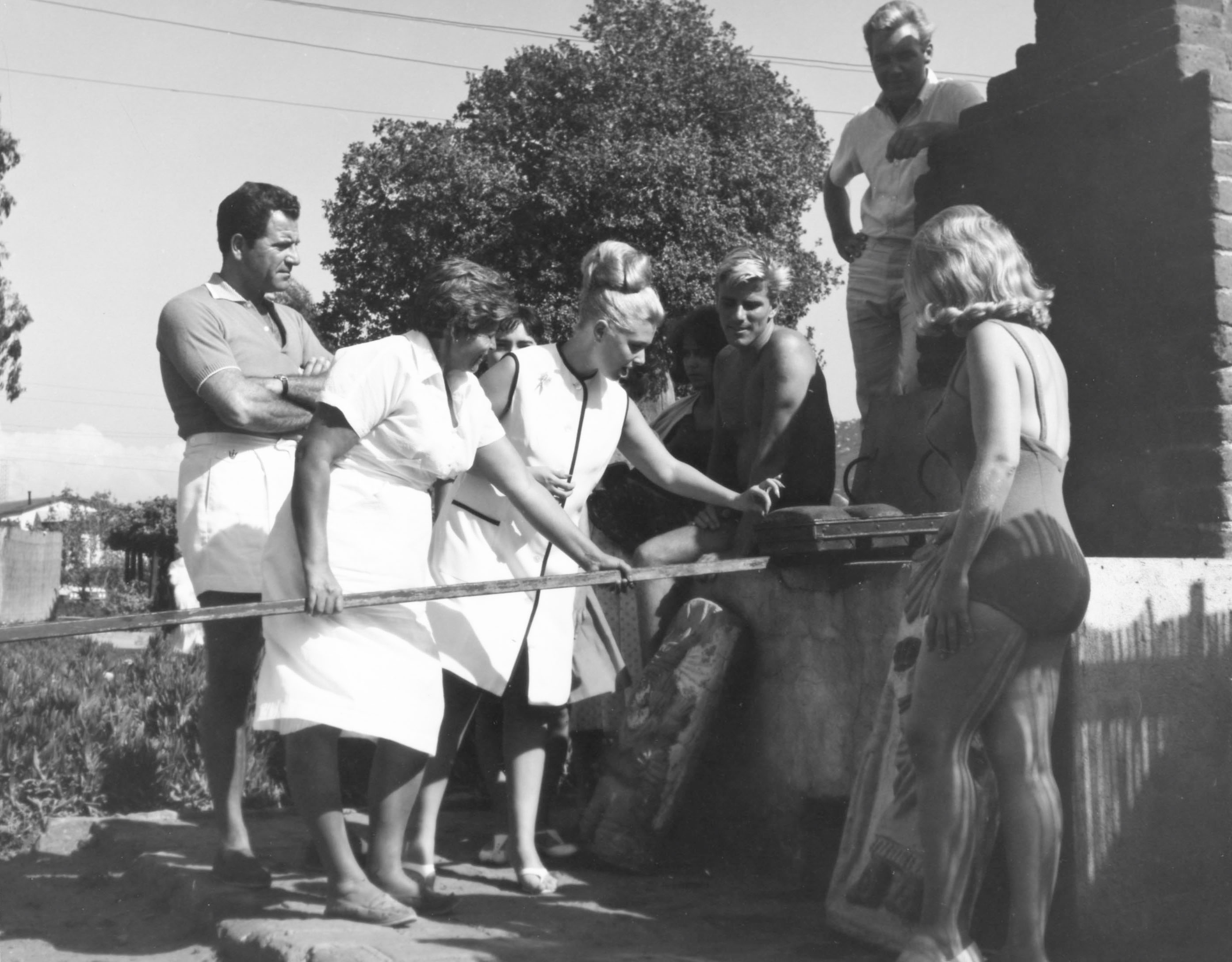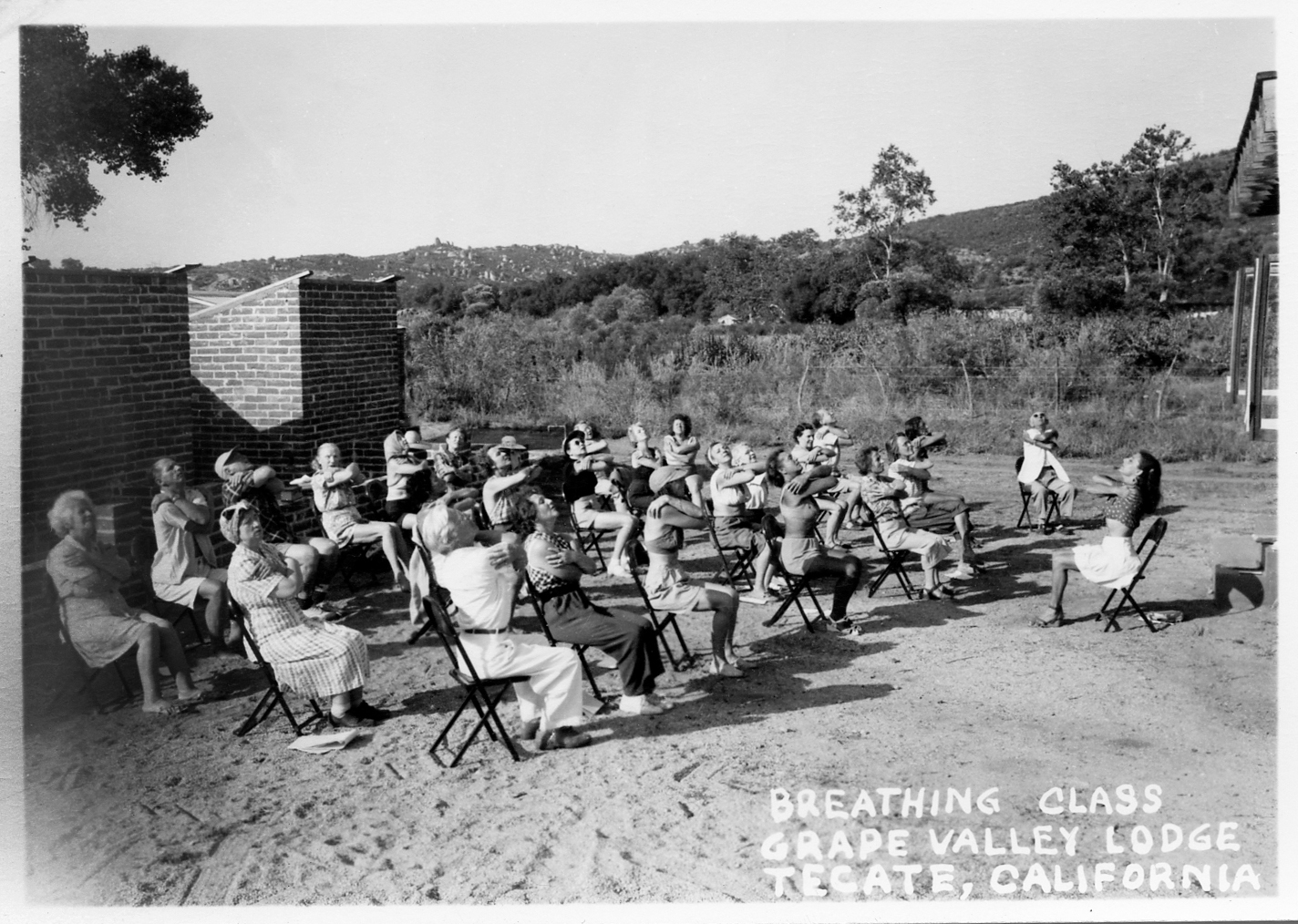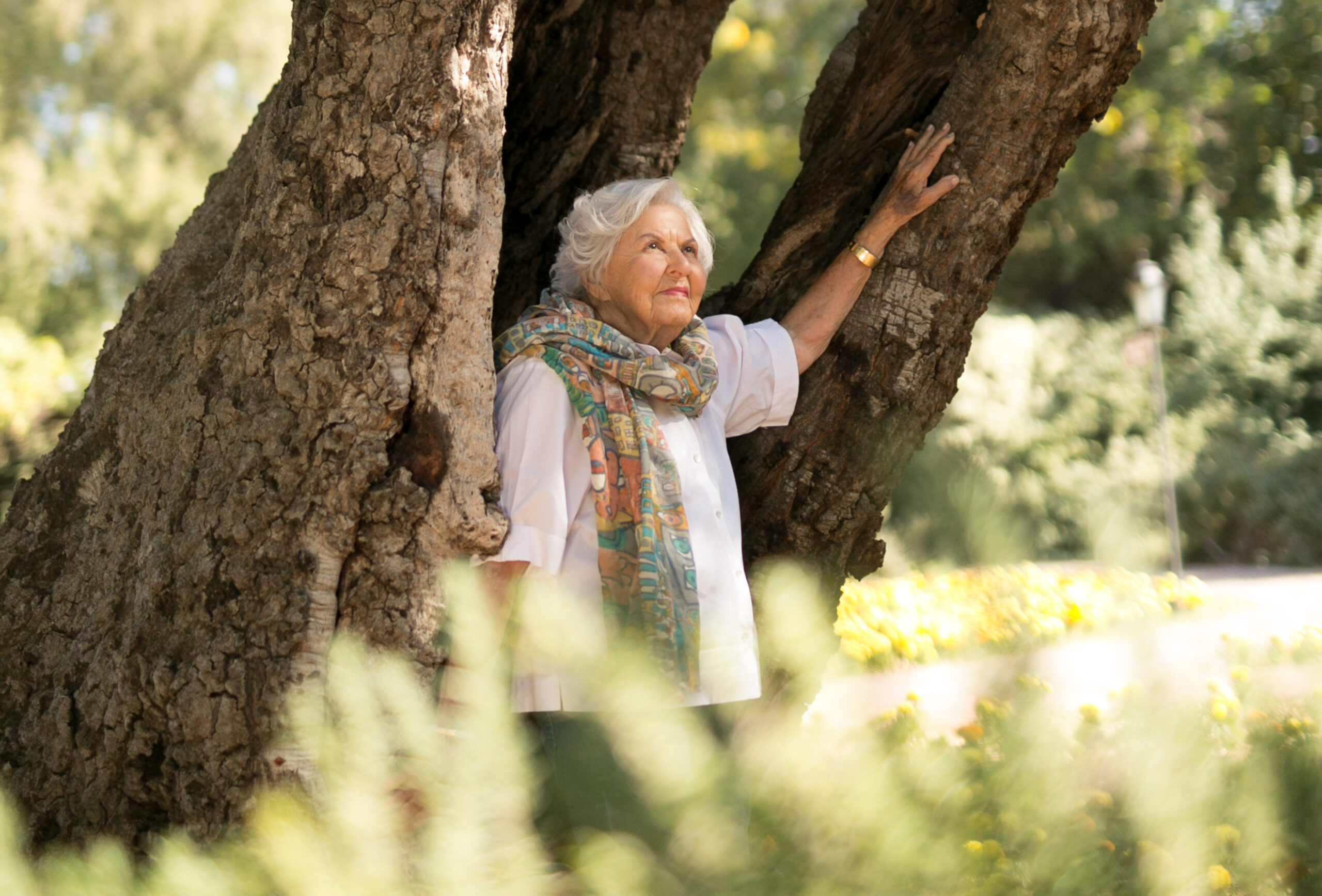Origins of the Ranch, Part XI

Bread and wine…early days with a giant bread oven and in the vineyards
We continue with some memories of food served at the Ranch in the early 1940s, recorded during an interview with Deborah Szekely in the early 1980s.
From the start, one of the things that distinguished the Ranch diet was truly whole-wheat bread. The Professor often cited the complaint of Sir Albert Howard that milling was the most disastrous discovery in human history. (Howard lived from 1873-1947, and was knighted in 1934 for his introduction of organic gardening; his book “An Agricultural Testament” was published in 1940.)
When the Professor read in the Zend-Avesta (the sacred texts of Zoroastrianism) how bread was prepared 5,000 years ago, he realized that milling then was still unknown. He wanted to reconstruct the process.
The annals of the Essene Brotherhood also influenced him with their description of whole-wheat grains germinated and then mashed between two stones to form paper-thin patties. They were set out on hot rocks to bake. The Essene stronghold by the Dead Sea was located at a latitude similar to that of Tecate, thereby making solar cooking possible.
We put our patties on sheets of salvaged tin before baking in the summer sunlight of Tecate. It worked!
There is no denying that the taste of sun-baked bread is different—quite palatable to noncritical, eager-to-explore, natural-living mavens but not calculated to appeal to every resort vacationer.
Eventually the Ranch whole-wheat bread evolved into more-traditional (and more palatable) loaves made from a classic (but decidedly more modern) recipe, and baked in a giant Mexican outdoor oven. Our bread shines as a side dish, and is nutty and delicious when toasted in the morning.
* * *
For the first three years, our meal-serving method was novel. Every plate was tagged for a specific individual. Guests retrieved their customized plates from a large bin. Each guest then went off to eat alone in some favorite spot. While eating, the guest reflected upon the food and the vitality…and other good things it would supply. In effect, this was not unlike the standard present-day advice extolling ways to extract total satisfaction from even small servings of food: don’t read while you eat, or watch TV…just focus all your senses and savor your food.
* * *
There can be little doubt that people draw strength from exposure to the clean, uncontaminated earth. As in so many Greek myths, there is some sound psychology in the sage of the Libyan giant Antaes. The Titan son of Poseidon (the sea) and Gaea (the earth), he could not be defeated in wrestling because Mother Earth restored his vitality every time he was thrown to the ground. (You may remember that Hercules cleverly got around this by holding Antaes aloft until he gave up.)
Rancho La Puerta guests no longer join in the day-to-day farming of organic vegetables and fruits, but they love to visit the abundant Tres Estrellas garden plot, admire the grounds’ luxuriant landscaping, and watch our vineyards mature each summer.
Grapes were growing here when we arrived. The Professor identified them as Rose of Peru, known in France as Rose d’Avignon. The variety had passed from France into Spain. The Conquistadores introduced it to South America, where it reached Peru. From there it made its way up the Pacific Coast into Baja California.
The Professor crossed our Rose of Peru vines with Pearl of Czaba shoots which he ordered from Hungary. Agostin Haraszthy, the Hungarian savior of the California wine industry, once imported this same early-maturing grape into Northern California.
We cultivated and watered our vineyard for two years before we deliberately ceased irrigating. It was the Professor’s belief that the roots would then push farther and farther into the ground in search of moisture and would draw up valuable minerals found only far below the topsoil. As a result, our grapes were never as large as those from a commercial grower, but always of high quality.
Our vineyards gave us grape cider, which we offered in a cleansing regimen based upon a so-called Grape Cure then popular among resorts in the south of France and elsewhere in Western Europe. In the Professor’s research, he also found a chapter of the Vispered of the Zend-Avesta devoted to such a cure. And he knew that the ancient Essene Brotherhood had practiced a collective grape cure at the time of the Autumnal Equinox.
Today most of our guests derive a chiefly aesthetic benefit from the Ranch vineyards. All are delighted when we distribute baskets of luscious ripe grapes at harvest time in late summer.


